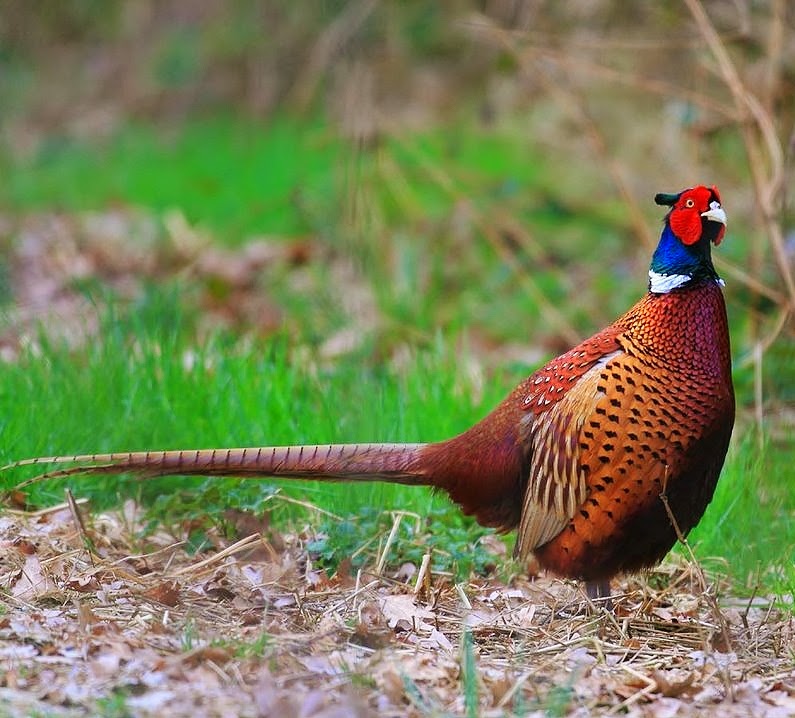 |
| Photo by Gerard Blokhuis (Wikipedia) |
Common name:
common phaesant (en); faisão (pt); faisan de Colchide (fr); faisán común (es); fasan (de)
Taxonomy:
Order Galliformes
Family Phasianidae
Range:
These bird originate from Asia, from the Caucasus, through northern Iran into Kazakhstan and Afghanistan and Mongolia, and into eastern and southern China, Korea, and marginally into south-eastern Russia, Myanmar and Vietnam. Due to its popularity as a game bird they have been introduced in Europe where they are found throughout the continent except northern Scandinavia and Iceland, to North America where they are found from southern Canada to the south western and north-eastern United States, and also to parts of Australia, New Zealand, Morocco and several islands in the Caribbean.
Size:
These birds are sexually dimorphic with the larger males measuring 70-90 cm, with 35-45 cm for the tail alone, while females are 55-70 cm long of which 20-25 cm are just the tail. They have a wingspan of 55-85 cm and weigh 1,1-1,5 kg.
Habitat:
They are found in a wide range of habitats, including forests ranging from rainforests to alpine and boreal forests, scrublands, grasslands and agricultural land including arable land, pastures and rice fields.
Diet:
The common pheasant is omnivorous, taking plant matter such as wild and agricultural seeds and grains, shoots, roots and berries, as well as insects and other invertebrates including grasshoppers, beetles, caterpillars, crickets, ants, snails and earthworms.
Breeding:
Common pheasants are polygynous, with males having harems composed of several females. They breed in March-June. Each female scrapes a shallow depression in the ground, lined
with grasses, leaves, weed stalks, fine twigs and feathers, which is usually located among tall vegetation. There she lays 7-15 olive-brown to blue-grey eggs, which she incubates alone for 23-28 days. The chicks are precocial, leaving the nest soon after hatching. They are able to fly 12-14 days after hatching, but continue to follow the mother for about 2 months.
Conservation:
IUCN status – LC (Least Concern)
This species has an extremely large breeding range and a global population estimated at 45-300 million individuals. The common pheasant is widespread and very common in much of its range, however populations are declining locally owing to habitat loss and over-hunting.







